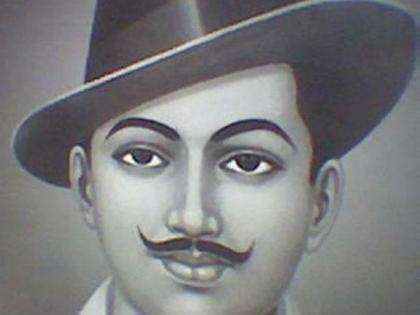Saluting Bravehearts: Freedom fighters who died young for India's Independence
By Lokmat English Desk | Published: August 9, 2022 10:57 AM2022-08-09T10:57:44+5:302022-08-09T10:59:09+5:30
Bhagat Singh Bhagat Singh was an Indian revolutionary freedom fighter who was hanged to death by British colonisers at ...

Saluting Bravehearts: Freedom fighters who died young for India's Independence
Bhagat Singh
Bhagat Singh was an Indian revolutionary freedom fighter who was hanged to death by British colonisers at the age of 23 years. Fondly known as 'Shaheed (martyr) Bhagat Singh', he is considered a national hero of India's freedom struggle against colonial rule. As a teenager, Bhagat Singh popularised the slogan of ‘Inquilab Zindabad’ which eventually became the catchphrase of the Indian independence movement.Bhagat Singh was born in a Sikh family in Banga village of Faisalabad district (previously called Lyallpur), now in Pakistan's Punjab province, on 27 September 1907. As his family was deeply inspired by nationalism, he too became actively involved in the country's freedom movements.He quit education at the age of thirteen and got admitted to the National College in Lahore, where he studied European revolutionary movements. When his parents tried to get him married, Bhagat Singh left home for Kanpur. In 1926, Bhagat Singh established the 'Naujavan Bharat Sabha (Youth Society of India) and joined the Hindustan Republican Association (later known as Hindustan Socialist Republican Association). During that time, he met many anti-colonial activists.In December 1928, Bhagat Singh, along with Sukhdev and Rajguru, planned to avenge the death of Indian nationalist leader Lala Lajpat Rai and plotted to assassinate the Superintendent of Police James Scott in Lahore.
Sukhdev
Sukhdev was a famous Indian revolutionary who played a major role in the India's struggle for Independence. He is amongst those great Indian freedom fighters who sacrificed their lives for the freedom of their country. His full name is Sukhdev Thapar and he was born on 15th May, 1907.Sukhdev Thapar was a member of the Hindustan Socialist Republican Association (HSRA), and organized revolutionary cells in Punjab and other areas of North India. A devoted leader, he even went on to educate the youth at the National College in Lahore, greatly inspiring them about India's glorious past.Sukhdev himself took active part in several revolutionary activities like the 'Prison hunger strike' in 1929; however, he would always be remembered in the chronicles of the Indian Freedom Movement for his daring yet courageous attacks in the Lahore Conspiracy Case (18th December, 1928), that shook the very foundation of the British Government. On 23rd March, 1931, the three brave revolutionaries, Bhagat Singh, Sukhdev Thapar and Shivaram Rajguru were hanged, whilst their bodies were secretly cremated on the banks of the River Sutlej. Sukhdev Thapar was just 24 years old when he became a martyr for his country.
Rajguru
Shivaram Rajguru was a great Indian freedom fighter. He played a vital role in India’s Independence. Not many know that his full name was Hari Shivaram Rajguru. He belonged to a Marathi Brahmin Family from Pune.Rajguru was born on 24th August 1908 in a village known as Khed, Pune. Since childhood he had witnessed the atrocities of the British. This made him have the early inner anger and strength to fight back. Hence, his dedication and patriotism made him an Indian revolutionary.He is mainly known for his involvement in the assassination of a British Raj police Officer Saunders. It was an act of revenge.On 23RD MARCH 1931, all three great freedom fighters, Rajguru, Bhagat Singh and Sukhdev were hanged till death by the British Government at Lahore. Rajguru was only 22 at the time of his death.
Khudiram Bose
At age 15, Khudiram Bose became a volunteer for Anushilan Samiti and was arrested for distributing pamphlets against the British government. He came in close contact with other revolutionaries like Barindra Kumar Ghosh.As a teenager, he became an active participant in the revolutionary circles. When Sri Aurobindo and Sister Nivedita visited Midnapore, they held many discussions with the existing revolutionary groups there and Khudiram remained an active member.As an 18-year-old, Khudiram decided to take the mission of killing a British judge Doughlas Kingford. He was the Chief Magistrate of the Presidency Court of Alipore and had sentenced editors of the paper Jugantar, including Bhupendranath Dutta, to rigorous imprisonment.Along with Praffula Chaki, Khudiram decided to attack Doughlas when he was heading home after a game of bridge with the family of a British barrister Pringle Kennedy. The revolutionaries mistakenly attacked the carriage of the Kennedy family instead of Doughlas and ended up injuring the daughter and wife of Pringle. The severe injuries led to the death of both these women.Although both Khudiram and Prafulla escaped and went two separate ways, both of them eventually sacrificed their life fighting for the freedom of this country.While Prafulla killed himself before getting caught by the British authorities, Khudiram was arrested and went undertrial for the killing of the two women in the Muzaffarpur conspiracy case. He was executed on August 11, 1908 when he was just 18 years old. It is said that Khudiram embraced death with a smile.
Mangal Pandey
The first war of Independence by Mangal Pandey, also known as the Sepoy Mutiny of 1857, sprouted the dream of Independence among Indians. The courageous soldier was sentenced to death by hanging after he attacked British officers in Kolkata.The Britishers, upon asking, denied the claim of using animal fat in the cartridges, but Pandey's observation and doubts started becoming stronger, which led to the mutiny. The revolutionary freedom fighter instigated his fellow sepoy mates against the British administration for their atrocities. On March 29, 1857, he attached two British officers in the Barrackpore district of Kolkata, after which he was imprisoned. During the trial, Mangal Pandey said to the court that his actions and revolt against the British rule were his intention and not influenced by any others. On April 8, 1857, he was sentenced to death by hanging in the province of Bengal at the age of 30.
Open in app